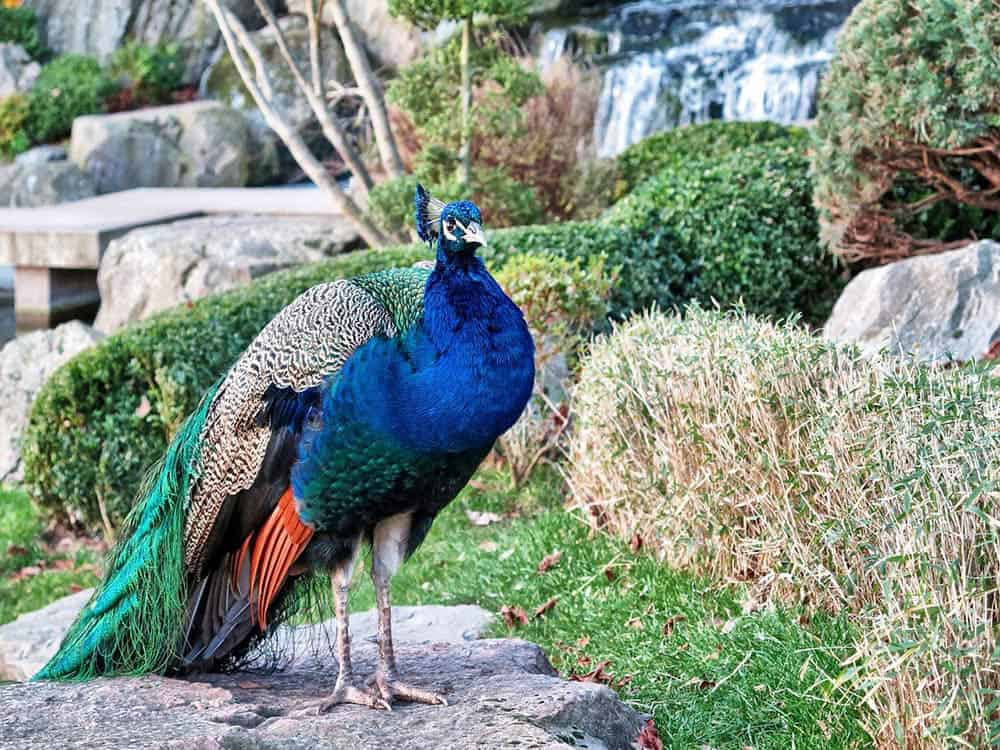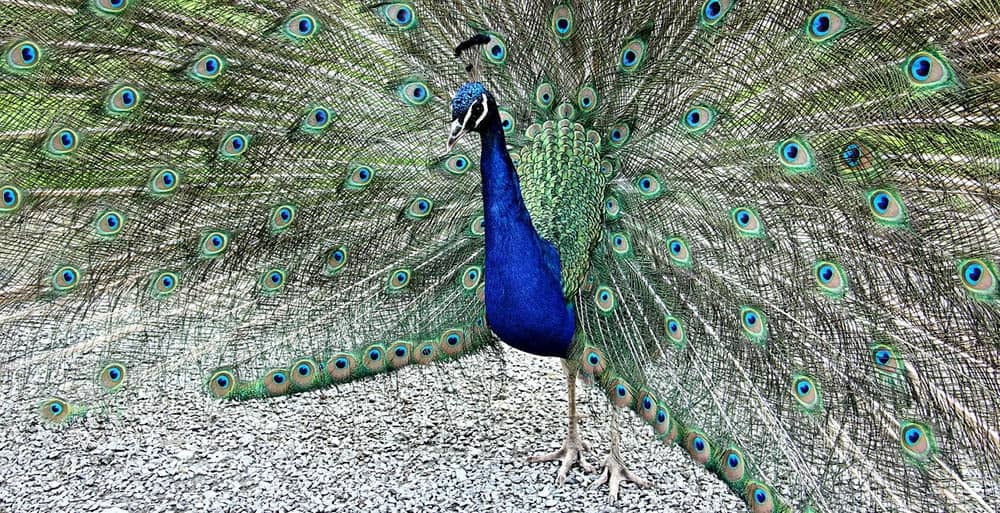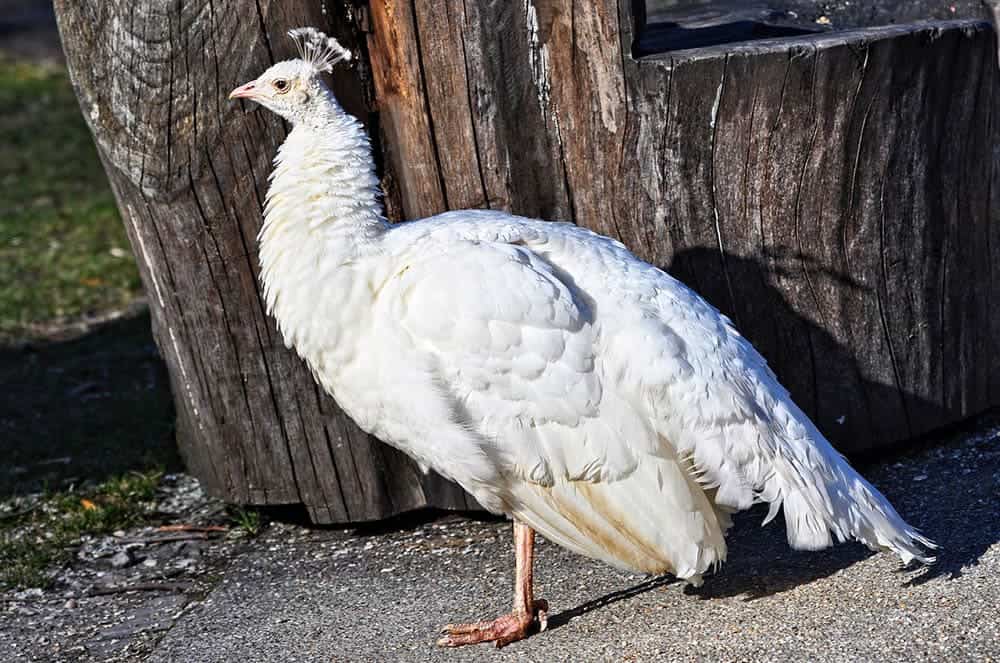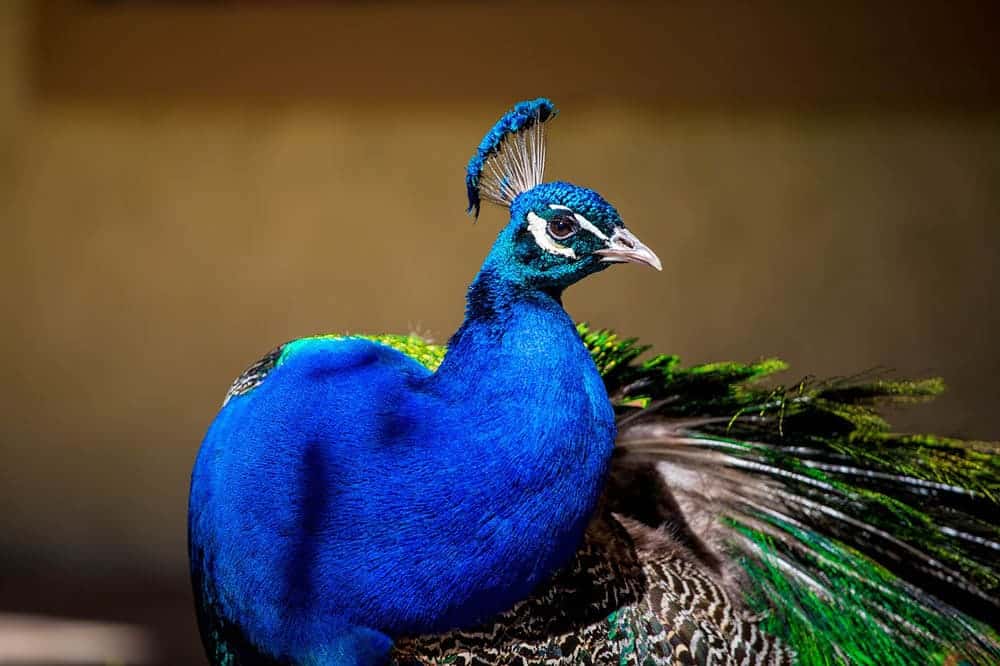Most of us think of the peacock as a beautiful bird with possibly the best tail in the world. With so many cute phrases associated with these birds, “pretty as a peacock” and “proud as a peacock” being the first two to pop into mind, it’s easy to get lost in their beauty and not understand the birds themselves. One of the most commonly asked questions about the peacock is if they lay eggs. The answer is no, peacocks don’t lay eggs.
Of course, now you’re wondering why peacocks don’t lay eggs, right? This answer may shock you just a bit, but peacocks are males and therefore can’t lay eggs. It’s their female counterparts, the peahen, that take on the role of mom. Now that you have the answer to that question, let’s learn a bit more about peacocks and peahens, collectively known as peafowl.

What Is a Peafowl?
The peafowl is closely related to pheasants. Originating in India, these birds live long, happy lives when they are well cared for or are raised in the right environment. For the most part, you may find that domestic peafowls can spend 40 to 50 years looking their best and sharing their amazing colors with the world.
Peafowls come in two main colors, green and blue. You’ll also discover that these birds are quite loud. If you bring a peafowl into your life, be prepared. In certain settings, they take on the role of watch-bird and love to alert you, and anyone else in earshot, when something is amiss.

The Prestigious Peacock
The male peafowl, known as the peacock is easily one of the most beautiful birds in the world. These pretty boys don’t reach maturity until they are around 3 years old. This is also when their train, the proper name for their tale, matures as well.
It’s actually this train that helps the peacock find his perfect peahen. Once his train is mature, he’ll preen and make a show of his tail in hopes of impressing the ladies. Like a true female, the peahen likes to ignore all this strutting, until she’s ready to mate. Then, unfortunately for the peacock, summer rolls around and his molting begins. This molten means his feather falls out and he’ll not be mating anymore for the season.

The Pretty Peahen
While the peahen may not have the train of the peacock, she is the one who ensures their kind continues. Peahens reach maturity before the males. Between 1 and 2 years of age, these little ladies will be ready to lay their first eggs. Like the boys, their tail feathers fill in but that doesn’t make it easy to know a peahen’s age. If you haven’t been with these ladies since they were chicks, you may not know their true age. Just like with any true lady.
In Spring, when breeding season starts, the peahen will watch those prancing peacocks until she’s ready. When she wants to breed and lay eggs, she’ll allow the male near her. After breeding, she will start laying an egg a day.

The Egg-Laying Process
When left to her own devices, a peahen will lay several eggs. Her daily laying normally goes on for 6 to 10 days. After she finishes, she’ll spend 28 days or so sitting on her clutch until her babies hatch. For most peahens, they can lay and hatch 2 clutches a year. For some feisty ladies, they may go with 3 clutches.
For those who plan on incubating the peahen’s eggs, daily removal is ideal. By doing this, a peahen can continue to lay for an entire month. This will provide breeders or owners with several valuable peacock eggs.

Breeding Season
The local climate determines when the breeding and laying season will start for peacocks and peahens. When they feel spring has arrived, normally in March, they will get started. Breeding season usually runs until August. When the peafowl feel the summer is ending, so does their mating.
During the breeding season, most peahens go through roughly three breeding cycles. During these cycles, the peahens lay for about a month then take a break before getting started again. Their break time isn’t very long, however. Peahens stop laying for 7 to 10 days then get back to work.

In Conclusion:
As you can see, peacocks don’t lay eggs. While they get to prance and look pretty, it is their very special counterparts, the peahens who ensure their babies are hatched and kept safe. If you’re considering bringing peafowl into your life and allowing them to breed, keep all this in mind. The last thing you want to do is chase around a peacock waiting for him to lay an egg.
Featured Image Credit: Pixabay
